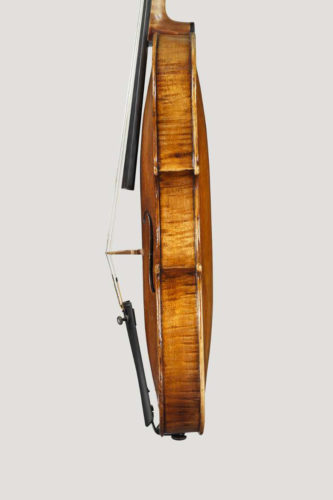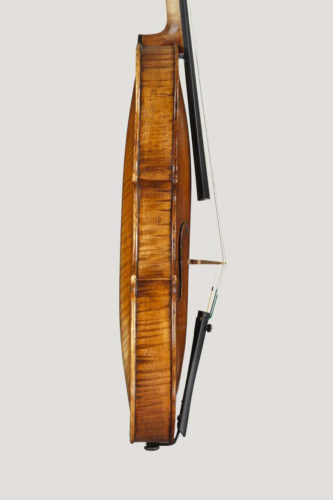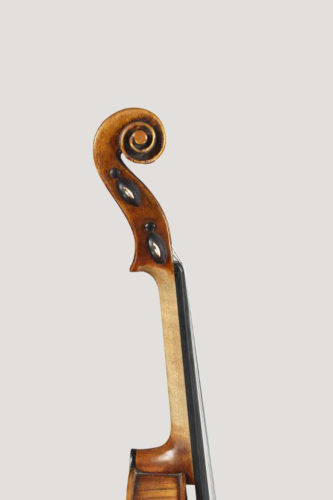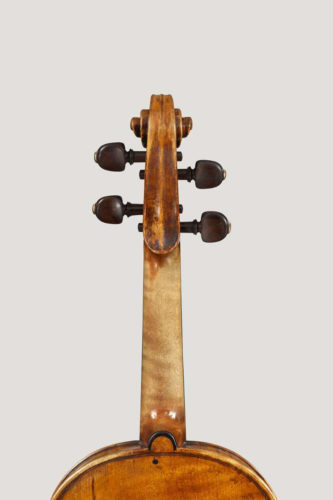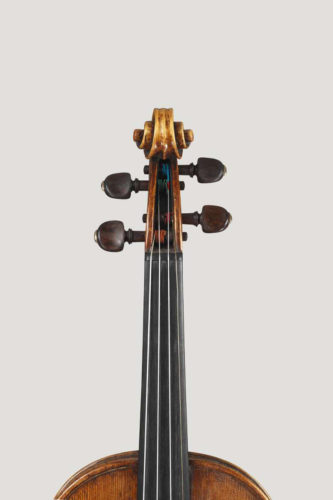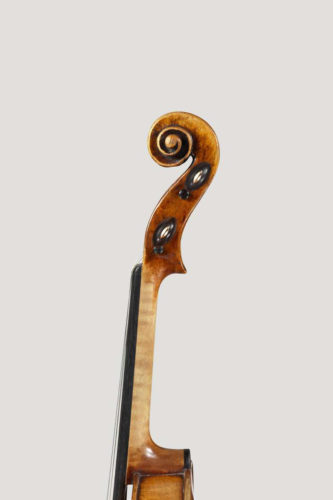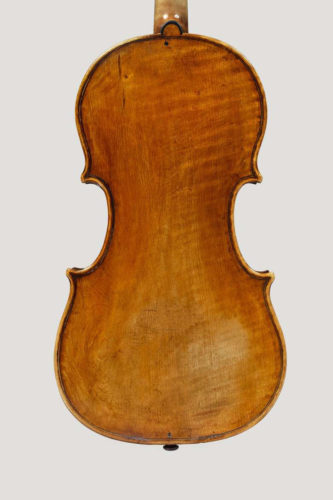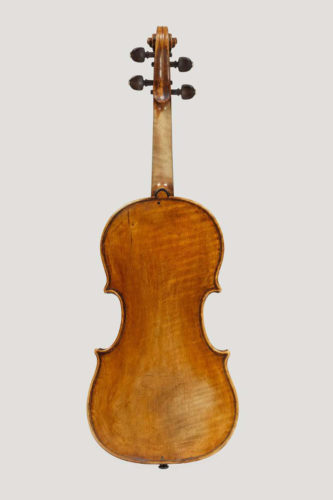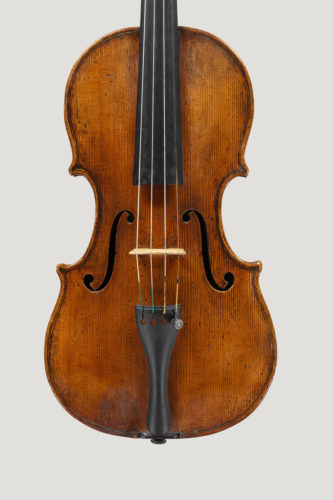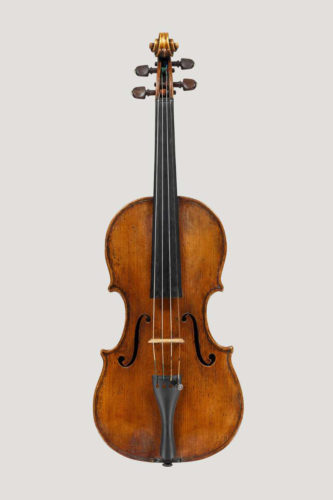Lorenzo Storioni
Violin made by Lorenzo Storioni in Cremona 1770-1780. This instrument is played by Berit Værnes Cardas.
Lorenzo Storioni was the most dynamic and influential of the postclassical Cremonese makers. He is often depicted as the man who rescued the great tradition of violinmaking in one of its poorest periods, after Stradivari, Bergonzi and Guarneri del Gesù all died within a decade of each other, leaving no obvious heirs.
He was born in 1744, the year of Guarneri del Gesù’s death, and began work in the late 1760s. Storioni’s family had settled in the same parish as the Rugeris, and were close neighbours. Francesco II and Carlo Rugeri, the sons of Vincenzo and grandsons of Francesco, were both instrument makers, and probably provided Storioni with his initial training. He was also acquainted with Antonio Stradivari’s last surviving son, Paolo, who at that time retained possession of all his father’s tools and templates. Paolo Stradivari sold the contents of the workshop to Count Cozio di Salabue in 1776, and among the documents dealing with the transaction, Paolo mentions Storioni as a violinmaker.
Storioni’s instruments are well-made, but by no means a match for the masterpieces of the classical Cremonese period. In his early work he can be seen to be tentatively imitating the various styles of earlier masters, from Amati to Guarneri del Gesù. In the early 1780s he took on an apprentice, Giovanni Rota, and his own work gradually became more confident and original, more substantial and more powerful in tone. In the late 1790s a decline set in, and for most of the first decade of the 19th century Storioni was absent from Cremona. During this period the young G.B. Ceruti emerged as the principal maker in the city, and Storioni returned home in 1810 in poor health. He died in 1816, having certainly brought back some momentum to Cremonese violinmaking, and leaving behind a substantial body of work which is now highly prized for its Cremonese heritage and tone quality.
The violin in the Dextra Musica collection is from Storioni’s mature period, made c.1770-80. It is a wonderfully well-preserved instrument, displaying the characteristically rugged quality and harmonious design of the mature works. The materials are quite plain; the back is made from a single piece of quarter-sawn maple with a light flame ascending from the bass side, where there is an original wing in the lower bout. The ribs are more closely figured than the back, and the scroll is of unmarked maple. The two pieces of spruce of the front appears not to be matched; the grain is narrower on the bass side than on the treble.
The outline is elegantly proportioned, with rounded centre bouts, short corners and nicely poised soundholes. The arching is particularly characteristic of the maker, being low but well formed, with broad supple curves towards the edge. The front is slightly higher than the back and has a strong, flattened vaulting beneath the bridge. The scroll is quickly carved, with a large central eye and shallow flutings. The finish of the wood overall is typical of Storioni’s work: a little ragged and textured, but clothed in an almost complete coat of golden-orange varnish. While a little harder and perhaps less vibrant than the best Cremonese varnish, Storioni’s recipe has worn well and now bears a distinguished patina of age.
The violin was previously owned and played by Mario Witkowski in England, and was purchased by Dextra Musica from the London violin dealer Adam Whone in 2006.
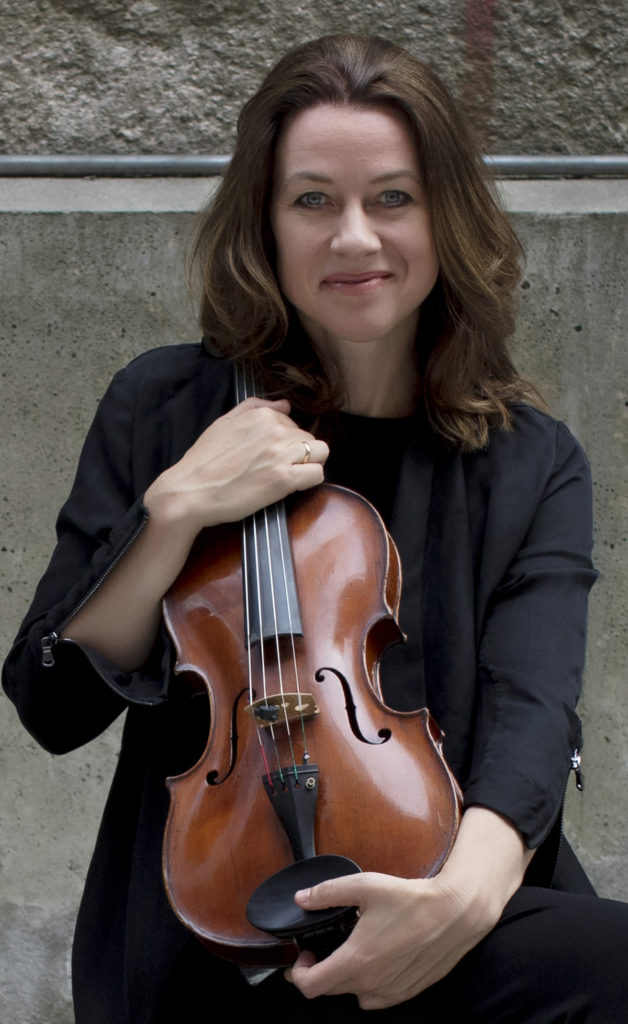
Berit Værnes Cardas
Berit Cardas is a founder member of the Vertavo Quartet. Cardas has been a leader of the Norwegian Chamber orchestra, and performed as a soloist with major Scandinavian orchestras. She is also a renowned pedagog. Among her ambitions is letting as many children as possible get the chance to experience classical music.
